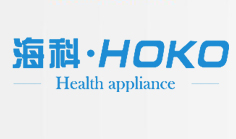How are you , i am here to share you Faq :
How often do I need to replace my filter?
Every 3000 hours, and the machine will alarm the users.
What is a Carbon filter?
Carbon filters help reduce unpleasant odors.
How do I know when to replace my filter?
Many of our models include a filter indicator light or digital display to take the guesswork out of when filter replacement is needed.
What types of particulate does an air purifier filter?
An air purifier filters dust, smoke, pollen, pet dander, mold spores, and other airborne particulate as small as 0.3 microns.
How is air cleaner performance measured?
Most air purifiers are tested for efficiency in terms of Clean Air Delivery Rate (CADR). These ratings indicate the volume of filtered air delivered by an air purifier, allowing you to compare one air purifier to another. The higher the CADR numbers, the faster the unit filters the air.
What is an Ionizer?
Some Air Purifiers have an independently controlled ionizer, which, when turned on, releases negative ions into outgoing filtered air. Ions are tiny particles that carry a positive or negative charge. These ions exist naturally around us, in the air, water and ground. Both positive and negative ions are colorless, odorless and completely harmless. Negative ions help the air purification process by attaching themselves to very small airborne particles in the room.
These particles take on a negative charge and may join with positively charged particles such as dust, pollen, smoke and pet dander to form larger particles. These larger particles are then more rapidly captured by the filter system, or may be attracted to positively charged surfaces throughout the home, like walls or floors. This may occur more frequently when the filter is nearing the end of its functional life expectancy and is able to capture less of the charged particles.
You may also note after extended use, that dust may have collected around the grills or front panel. This is from the ionization affect caused by the negative ions exiting from the air outlet. This is additional evidence of the air cleaning effectiveness of negative ions. The dust can be easily removed with a clean, damp cloth or soft brush.
Finally, using your ionizer may result in an occasional popping or cracking sound. This is a normal sound, generally caused by particles of dust that are interrupting the flow of ions, causing a small build-up of ions that, when discharged, cause the popping or cracking sound.
NOTE: It is important to replace the HEPA filter at the recommended intervals.
Using the ionizer in conjunction with dirty filters may result in dirty particles exiting the air purifier and being attracted to walls, carpets, furniture or other household objects. These dirty particles may prove very difficult to remove. Homes with excessive amounts of pet dander, dust, or smoke may decrease the life expectancy of the HEPA filtration system. You may want to run the Ionizer less often and check the condition of the HEPA filter(s) more frequently.
What contributes to poor indoor air quality?
Today's homes often are built energy efficient to "hold" air inside - avoiding heat loss in the winter and heat gain in the summer. Of course, what's better for your energy bills isn't necessarily better for indoor air quality. This type of "tight" construction often doesn't allow the home to breathe.
What is HEPA?
HEPA stands for High Efficiency Particulate Air (filter). HEPA is a technology developed in the 1940's by the U.S. Atomic Energy Commission to full-fill a top-secret need for an efficient way to filter radioactive particulate contaminants. HEPA is a type of highly efficient filtration media that removes microscopic particles from air passing through the filter. There are different ranges of efficiencies depending on the particle size. The most efficient form of HEPA removes 99.97% of particles with a size of 0.3 microns that pass through the filter. A HEPA air purifier will not capture chemical gasses.
Why are air purifiers needed?
The air inside many homes often is many times more polluted than outside air. Here are some little known facts about the air inside many homes:
The Environmental Protection Agency (EPA) estimates that indoor air pollutant levels may be as many as two to five times higher than the pollutant levels outdoors.
Indoor air pollution is one of the top environmental concerns in the country.
Americans spend up to 90 percent of their time indoors.
Indoor air pollutants such as tobacco smoke, pollen, mold, dust and animal dander often are associated with asthmatic and allergic reactions in persons.
What is a micron?
The size of airborne particles that an air purifier captures are measured in microns. A micron is approximately 1/25,400 of an inch or approximately 100 times smaller than a human hair. Particles of this size are not visible to the naked eye.
How does an air purifier work?
Dirty air is drawn into the air purifier through the inlet grill. Some of the units have a washable pre-filter that traps larger airborne particles. Air then passes through the carbon filter with help reduce odors. After passing through the carbon filter, the air then passes through the HEPA filter made of tightly woven fibers. Some units have electronic ionizers which further assist in particle removal. The fan then redistributes the filtered air throughout the room.
What is washable pre-filter?
Washable pre-filter helps capture larger particles and can be easily cleaned. Simply remove the pre-filter from your machine and wash it in warm, soapy water. Rinse and drip dry the pre-filter thoroughly before replacing it.
What room sizes can an air purifier clean?
The room size is generally recommended based on unit's performance ratings (CADR). Most air purifiers will have the appropriate room size reference on the front of the packaging.
Care and Cleaning
Always unplug the air cleaner before moving or cleaning the unit, opening the grill, or changing the filters. It should also be unplugged whenever the unit is not in use. To disconnect the unit, be sure to pull the plug and not the cord. Permanent filters can be vacuumed every few months for easy cleaning.
The washable pre-filter captures larger particles and extends the permanent filter’s cleaning cycle.
NEVER drop or insert any objects into the openings of the unit.
Do not operate any appliance with a damaged cord or plug.
DO NOT place anything on top of unit.
NEVER use detergents, gasoline, glass cleaner, furniture polish, paint thinner, or other household solvents to clean any part of the appliance.
Always turn the appliance off before unplugging it.
The ionizer may cause a static charge to build up on the air outlet grill. A static charge may be felt if the unit is not properly grounded. To avoid a static charge, plug the unit's three-prong plug into a grounded outlet, or properly install a ground adaptor. The static charge will not occur if the ionizer is off.
This appliance should only be used in rooms with temperatures between 4° C (40° F) and 43° C (110° F).
Cleaning and maintenance:
Turn off and unplug the unit before cleaning.
The outside of the air purifier can be cleaned with a soft, damp cloth.
The filtered air outlet/top air vent can be cleaned of dust with a small, soft brush.
You can remove the air inlet/front grill for cleaning by opening the air cleaner’s door.
Carefully place fingers in the indentation on the right side of the door and gently pull forward. Once the door is open to 90 degrees, pull the grill up and forward. Once removed, the front grill can be cleaned with warm, soapy water. Do not place in dishwasher. Make sure the grill is completely dry before reinstalling.
If you wish to clean the inside of the air purifier, please remove filters and only use a dry, soft cloth to wipe it down.
DO NOT wash HEPA or CARBON filters.
WARNING: Do not allow moisture to come in contact with the main housing of the air cleaner.
Pre-filter cleaning instructions:
Turn off and unplug the unit before cleaning.
Every 2-3 weeks check the conditions of the washable foam pre-filter.
Open the front door and remove the pre-filter frame to examine the pre-filter.
If the pre-filter has a noticeable amount of dust, lint or particulate accumulation, wash it by hand in warm soapy water. The pre-filter must be washed at least every 30 days, or more often as necessary. If the pre-filter is worn or damaged replace it. DO NOT wash in an automatic washer. Gently hand wash only.
After washing, rinse and dry the pre-filter thoroughly before replacing it into the air cleaner door. DO NOT dry the pre-filter in an automatic dryer. Dry only by dabbing gently with a dry, cloth hand towel.
Replace pre-filter in door and latch pre-filter frame.
FAQ for Order :
Q: May I have samples?
A: Yes, of course. Sample cost can be refunded if you place formal orders in the future. You just need to tell me consignee’s contact information and courier account Number. If you don’t have a courier account, we 'll calculate for you, freight prepaid.
2. Q: Can you change the funtion or change apperance for me?
A: Yes, of course if you can provide us detailed specification or drawing to us.
3. Q: Can I use our own designed package?
A: Yes, size, color, logo and packaging style of product are customized
4. Q: What’s your MOQ?
A: Normally, 500sets/item. We also warm welcome any trial order whose QTY less is than our MOQ. If you have a trial order also welcome to tell me.
5. Q: When’s your delivery time?
A: Generally, 1-3 working days for existing samples, within 30 days for mass production.
Best Regards,
Jak Chan
Mob & Whatapp: +86 13538724001 Wechat: Jakchan86 Skype: Jakchan86
Director@awpurifier.com Director@purifier.wang Director@gzhaike.com
Guangzhou Haike Electronics Technology.Co ., Ltd.
Tainan load 613 ,Dongchong town,Nansha,Guangzhou
We are manufacturer for OEM ODM air purifier and , i will offer you the most suitable products and best service.



 Jakchan86
Jakchan86
 JakChan
JakChan